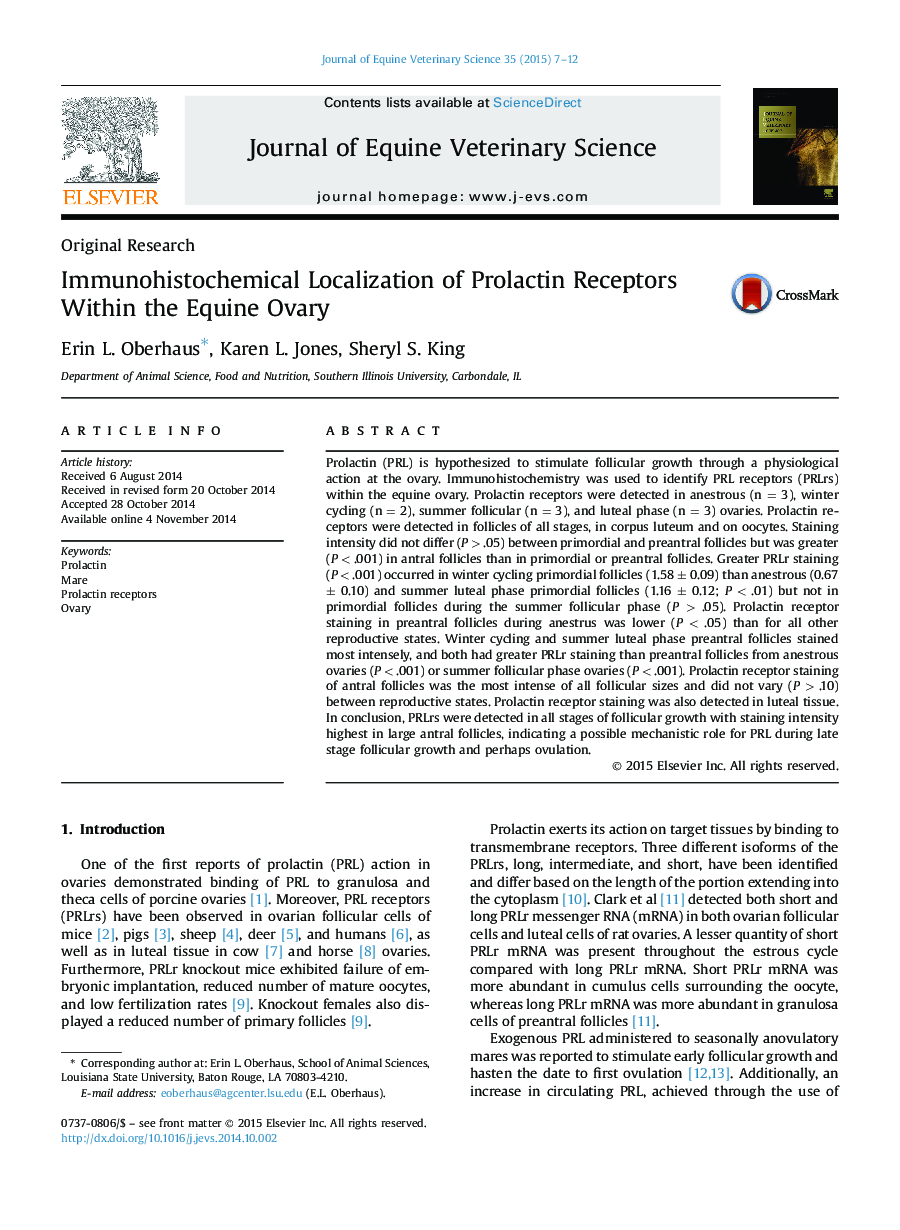| Article ID | Journal | Published Year | Pages | File Type |
|---|---|---|---|---|
| 2395020 | Journal of Equine Veterinary Science | 2015 | 6 Pages |
Abstract
Prolactin (PRL) is hypothesized to stimulate follicular growth through a physiological action at the ovary. Immunohistochemistry was used to identify PRL receptors (PRLrs) within the equine ovary. Prolactin receptors were detected in anestrous (n = 3), winter cycling (n = 2), summer follicular (n = 3), and luteal phase (n = 3) ovaries. Prolactin receptors were detected in follicles of all stages, in corpus luteum and on oocytes. Staining intensity did not differ (P > .05) between primordial and preantral follicles but was greater (P < .001) in antral follicles than in primordial or preantral follicles. Greater PRLr staining (P < .001) occurred in winter cycling primordial follicles (1.58 ± 0.09) than anestrous (0.67 ± 0.10) and summer luteal phase primordial follicles (1.16 ± 0.12; P < .01) but not in primordial follicles during the summer follicular phase (P > .05). Prolactin receptor staining in preantral follicles during anestrus was lower (P < .05) than for all other reproductive states. Winter cycling and summer luteal phase preantral follicles stained most intensely, and both had greater PRLr staining than preantral follicles from anestrous ovaries (P < .001) or summer follicular phase ovaries (P < .001). Prolactin receptor staining of antral follicles was the most intense of all follicular sizes and did not vary (P > .10) between reproductive states. Prolactin receptor staining was also detected in luteal tissue. In conclusion, PRLrs were detected in all stages of follicular growth with staining intensity highest in large antral follicles, indicating a possible mechanistic role for PRL during late stage follicular growth and perhaps ovulation.
Related Topics
Life Sciences
Agricultural and Biological Sciences
Animal Science and Zoology
Authors
Erin L. Oberhaus, Karen L. Jones, Sheryl S. King,
